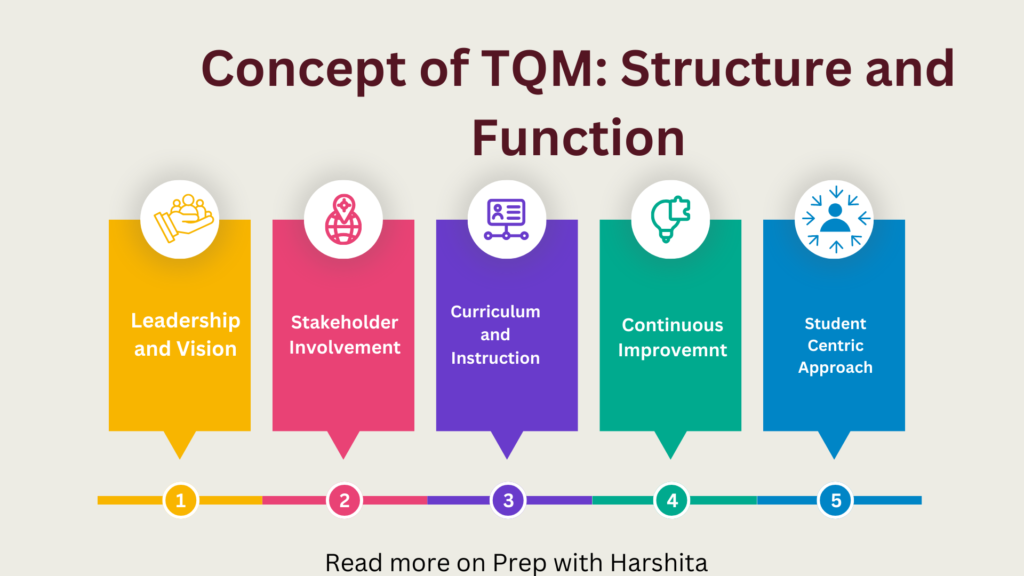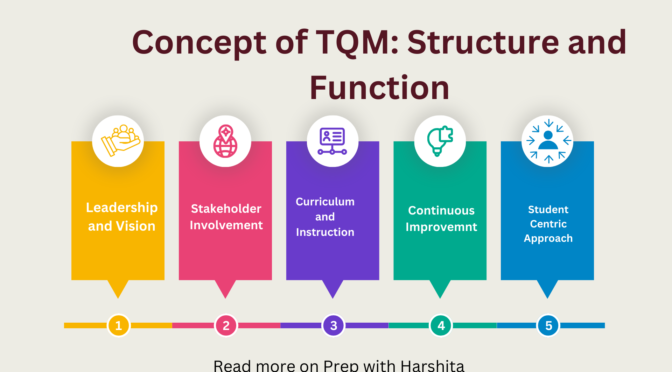Total Quality Management (TQM) is an approach that focuses on continuous improvement in all aspects of an organization’s operations, products, and services. While TQM is often associated with business and industry, its principles can be applied to educational institutions, including schools. Implementing TQM in schools involves structuring and organizing various aspects of the educational system to enhance overall quality.
Here’s a breakdown of the concept of TQM in the context of a school, covering both structure and function:
Leadership and Vision:
- Structure: The school leadership, including principals and administrators, plays a crucial role in implementing TQM. They need to establish a clear vision for quality education and communicate it effectively.
- Function: Leaders should promote a culture of continuous improvement, set high expectations for staff and students, and provide the necessary resources and support to achieve quality goals.
Stakeholder Involvement:
- Structure: Establish committees or task forces involving teachers, parents, students, and community members to participate in decision-making processes related to school quality.
- Function: Encourage open communication and collaboration among stakeholders. Collect feedback regularly and involve the community in setting educational objectives.
Curriculum and Instruction:
- Structure: Develop and regularly review the curriculum that aligns with educational standards and meets the diverse needs of students.
- Function: Implement effective teaching methods, provide professional development opportunities for teachers, and use data for teaching improvements. Focus on individualized learning to address the unique needs of each student.
Continuous Improvement:
- Structure: Establish a systematic process for collecting and analyzing data related to student performance, teacher effectiveness, and overall school operations.
- Function: Use data-driven decision-making to identify areas for improvement.
Student-Centric Approach:
- Structure: Create a student-centered environment that focuses on personalized learning, student engagement, and holistic development.
- Function: Alter educational experiences to individual student needs, provide support services, and create a positive and inclusive school culture for growth.
Quality Assessments:
- Structure: Design and apply a comprehensive assessment system that includes formative and summative evaluations.
- Function: Use assessments to measure student learning outcomes, identify areas for improvement, and inform instructional decisions. Ensure that assessments align with the school’s educational goals and standards.
Parental and Community Engagement:
- Structure: Involve parents and the community in school activities and decision-making processes.
- Function: Foster partnerships with parents and the community to support students’ academic and social development. Communicate transparently about school performance and involve external stakeholders in improvement initiatives.
Also Read: Problem Faced in School Management

Also Visit: Prep with Harshita

